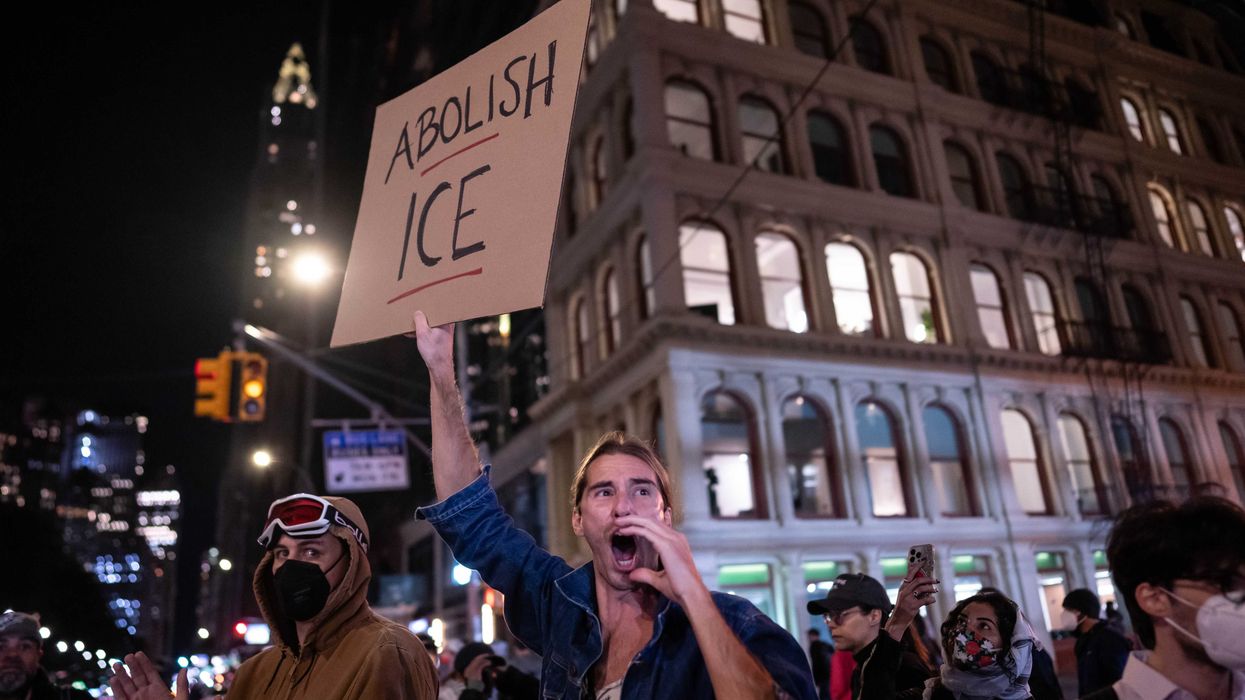Glenn listened to a few of Frank Sinatra’s greatest hits on his ride to work this morning, and he found the lyrics resonated with him more now than ever before. "The Impossible Dream," "My Way," and "That’s Life" have a grit and truthfulness that Glenn found to be particularly apropos.
“I have to tell you I was driving in today and I was listening to some Frank Sinatra and I thought to myself: You know what? The world needs a little more Frank Sinatra,” Glenn said. “Can you imagine what Frank Sinatra would be saying to us right now? I mean don't you think we need some manly men. We need some men who are just saying it like it is, Jack.”
Thinking back to the 1960s when these songs were first released, Glenn recalled the seemingly dire situation of the United Sates. It was era of “tearing each other apart.” From the assassinations of John F. Kennedy and Martin Luther King, Jr. to widespread political unrest, the world probably looked “like it was coming to an end.” But there was a bright light at the end of the tunnel, and that was the moon landing in 1969.
“I want to ask you: Where is that bright light today. Where are the people that really, truly say: We can do anything,” Glenn asked. “Let me read the lyrics from three Frank Sinatra songs and tell me that this wasn't part of that moonshot attitude. That while everybody else was rolling around in the mud, there were a group of people that were saying: We can do it. We can do anything.”
Today Glenn found himself particularly grateful for the fact that he got to witness the moon landing. He may have only been 5-years-old, but it was proof that we are capable of doing amazing things.
“I actually said in my prayer today: Thank God that I lived in the era of the moonshot; that I saw a man do that,” Glenn said. “Because I'm not sure, if we don't turn things around, we're going to be doing amazing things anymore. We're going to be entertaining ourselves with bogus virtual reality instead of reality.”
To start, Glenn read the lyrics to "The Impossible Dream":
To dream the impossible dream
To fight the unbeatable foe
To bear with unbearable sorrow
To run where the brave dare not go
To right the unrightable wrong
To love pure and chaste from afar
To try when your arms are too weary
To reach the unreachable star
This is my quest, to follow that star
No matter how hopeless, no matter how far
To be willing to give when there's no more to give
To be willing to die so that honor and justice may live
And I know if I'll only be true to this glorious quest
That my heart will lie peaceful and calm when I'm laid to my rest
And the world will be better for this
That one man, scorned and covered with scars,
Still strove with his last ounce of courage
To reach the unreachable star
“That is the attitude that America needs. That's the attitude that all mankind should be striving for right now: To right the unrightable wrong,” Glenn said. “Let's do what we have to do knowing that we'll never be able to right it. But we can make it as right as we possibly can. Let's fight even though we don't think we're going to win because we're not going to violate our own principles. Because in the end, we know that the world will be better by far because we lived."
He then read "My Way":
And now, the end is here
And so I face the final curtain
My friend, I'll say it clear
I'll state my case, of which I'm certain
I've lived a life that's full
I traveled each and ev'ry highway
And more, much more than this, I did it my way
Regrets, I've had a few
But then again, too few to mention
I did what I had to do and saw it through without exemption
I planned each charted course, each careful step along the byway
And more, much more than this, I did it my way
Yes, there were times, I'm sure you knew
When I bit off more than I could chew
But through it all, when there was doubt
I ate it up and spit it out
I faced it all and I stood tall and did it my way
I've loved, I've laughed and cried
I've had my fill, my share of losing
And now, as tears subside, I find it all so amusing
To think I did all that
And may I say, not in a shy way,
"Oh, no, oh, no, not me, I did it my way"
For what is a man, what has he got?
If not himself, then he has naught
To say the things he truly feels and not the words of one who kneels
The record shows I took the blows and did it my way!
Yes, it was my way
“We need another Frank Sinatra… We need to have a little more of a brash attitude I think. When it comes to life and just saying, look this is what's true and what's not,” Glenn said. “We are living in a time right now that is about envy and vengeance… And I think this comes from a place of: I don't believe I can actually ever do anything. And it's too hard anyway to do.”
The antithesis of that mindset is what is on display in "That’s Life":
That's life (that's life), that's what all the people say
You're ridin' high in April, shot down in May
But I know I'm gonna change that tune
When I'm back on top, back on top in June
I said that's life (that's life), and as funny as it may seem
Some people get their kicks stompin' on a dream
But I don't let it, let it get me down
'cause this fine old world, it keeps spinnin' around
I've been a puppet, a pauper, a pirate, a poet, a pawn and a king
I've been up and down and over and out and I know one thing
Each time I find myself flat on my face
I pick myself up and get back in the race
That's life (that's life), I tell you I can't deny it
I thought of quitting, baby, but my heart just ain't gonna buy it
And if I didn't think it was worth one single try
I'd jump right on a big bird and then I'd fly
I've been a puppet, a pauper, a pirate, a poet, a pawn and a king
I've been up and down and over and out and I know one thing
Each time I find myself layin' flat on my face
I just pick myself up and get back in the race
That's life (that's life), that's life and I can't deny it
Many times I thought of cuttin' out but my heart won't buy it
But if there's nothin' shakin' come this here July
I'm gonna roll myself up in a big ball a-and die
My, my!
“That's life. It's going to suck sometimes. You're going to be riding high, and then the next month you're going to be down in the dumps and people will be kicking the snot out of you,” Glenn concluded. “But don't worry because a month later you're going to be back up again. Pick yourself back up again and let's go. Let's go to the moon.”

 Joe Raedle / Staff | Getty Images
Joe Raedle / Staff | Getty Images
 AASHISH KIPHAYET / Contributor | Getty Images
AASHISH KIPHAYET / Contributor | Getty Images Harold M. Lambert / Contributor | Getty Images
Harold M. Lambert / Contributor | Getty Images Adam Gray / Stringer | Getty Images
Adam Gray / Stringer | Getty Images